if you are looking for the best 3D printer under 200 UK, this article is for you. Don’t go anywhere. Keep reading this one.
Having personally tested and explored various 3D printers for several weeks, I can confidently say that these machines have immense value in both professional and personal realms. Witnessing their capability to transform ideas into physical objects is awe-inspiring. The convenience of producing prototypes, replacement parts, and artistic creations in the comfort of one’s space is empowering.
Throughout the testing process, I found myself enthralled by the endless potential these printers offer. From creating intricate jewelry to functional household items, the versatility of 3D printing knows no bounds. Moreover, the affordability of 3D printers under £200 in the UK makes them accessible to a broader audience.
According to Pete Basiliere, former research vice president at Gartner,”over 200 startups globally are now producing consumer-focused 3D printers starting at just a few hundred dollars.” The days of complex setups and technical hurdles with filament-based printers are behind us. Challenges like aligning print beds, adjusting nozzle distances, and carefully removing finished prints have become simpler, making 3D printing more accessible to everyone.
But fear not! The world of 3D printing has evolved, and we’re excited to share our findings after testing several models for weeks. Today, 3D printers have matured significantly, becoming more affordable and user-friendly, making them accessible to DIYers and hobbyists alike. Now, completing fundamental tasks no longer results in frustrating battles with technical glitches. However, it’s important to understand the distinctions between different models, especially if you’re looking for a budget-friendly option or just starting in the world of 3D printing.
In the following paragraphs, we’ll delve into our experiences with various 3D printers under £200, highlighting their strengths and areas for improvement. Our walkthrough guide will provide you with valuable insights into the essential specifications and technologies for first-time buyers. So, if you’re ready to explore the exciting world of 3D printing and unleash your creativity, we invite you to continue reading. Discover the best affordable 3D printers and embark on a fulfilling journey of turning imagination into reality.
Best 3D Printer Under 200 UK At A Glance
Let’s look at the models below.
| 3D Printer Name | Buyer Satisfaction Ratings | Reason To Buy |
|---|---|---|
| 3 Pro (Must Buy) | 90% | Ideal entry level for beginners, solid printing at a little cost. |
| Creality Ender | 88% | Good performance, wide community support, quality prints |
| Entina Mini | 88% | Compact design, beginner-friendly, affordable price |
| WEEFUN (Must Buy) | 90% | User-friendly interface, great for small projects, solid build quality |
| Voxelab Aquila | 84% | Excellent for DIY enthusiasts, decent print quality, good value for money |
| BIQU | 80% | Innovative features, modular design, suitable for hobbyists |
| ANYCUBIC | 90% | High-resolution prints, easy setup, versatile filament compatibility |
Exploring The Right Kind of 3D Printer Under £200
When looking for a 3D printer under £200, I always think about how I’m going to use it. For larger projects, a big printer makes sense, but for smaller items, compact printers work just fine. If you want detailed, high-quality prints, go for a high-resolution printer. Just keep in mind that it might take more time and cost more for preparation.
Ease of use matters a lot to me, too. I check the printer’s interface, the type of filament it supports, and the overall usability. Automatic leveling is a key feature I look for. Printers that need manual leveling can be frustrating and time-consuming. Even printers claiming to have auto leveling often require some extra effort, so reading reviews before buying is a smart move.
A heated bed is another must-have for me. It improves print adhesion, and thankfully, most 3D printers include one. For removing models, I find a PEI sheet incredibly helpful. This flexible, magnetic sheet makes it easy to pop prints off the platform once they’re done.
Finally, a touchscreen is something I appreciate. While some printers still use old-fashioned buttons or rotary dials, a touchscreen is much easier to use. And if the printer has Wi-Fi or networking options, I can print directly from my phone or computer, which is a big plus. If not, I have to rely on the built-in screen, which isn’t as convenient.
Correct Shape And Design
One crucial aspect to consider is the build volume, which refers to the maximum dimensions (height, width, and depth) that a 3D printer can accommodate. We categorize build volumes as small, medium, or large based on their size. Typically, printers with smaller build volumes are more affordable, while higher-end printers tend to offer larger build volumes. However, the type of printer also plays a role in determining the build volume.
Open-frame printers, which lack a solid physical framework, often provide relatively larger build volumes for the price. In contrast, closed-frame printers and semi-open models, with a sturdy top, base, and sides but an open front and sometimes rear, tend to have smaller build volumes. It’s important to compare the build volume to the types of objects you plan to print. For home usage, ensure that the printer’s measurements align with your desired print sizes and fit nicely on your desk.
Another consideration is the design of the printer itself. You can choose between a neatly self-contained printer or one with its inner workings on display. The latter design, often an open-frame style, can be appealing if you enjoy technology and engineering. It offers easier maintenance and a visually interesting look. However, an enclosed printer is more suitable for a household environment. 3D printing involves moving mechanical components, and the extrusion unit can reach temperatures above 250°C. An enclosed design provides added safety by preventing accidental contact with these components and helps contain the noise generated by cooling fans and motors.
Open Vs Closed Frame
When it comes to the debate between open-frame and closed-frame 3D printers, I have a personal perspective on the matter. Let’s talk about the frame “form factor” and how it influences the overall experience.
Closed-frame 3D printers are like sturdy boxes with a solid base, walls (with a transparent front entrance), and a top cover. One of the advantages of closed frames is the added protection they offer. They create a barrier between the hot extruder and anyone or anything that might accidentally come into contact with it. Additionally, closed-frame printers help reduce operational noise and contain the smell of melted filament, which can be an issue when working with ABS plastic. However, it’s important to note that closed-frame printers often have smaller build volumes compared to their open-frame counterparts since they have fewer or no limitations.
On the other hand, open-frame 3D printers provide a different approach. If a large construction volume is a priority for you, an open-frame printer is likely to be more cost-effective. However, it’s essential to consider the potential drawbacks. Open-frame printers tend to be louder and may emit unpleasant odors when specific polymers melt. Moreover, they offer minimal safety measures for anyone who might accidentally touch the hot extruder. Depending on the specific model, open frames might require assembly, and they generally demand more setup considerations and maintenance to ensure optimal performance. Nevertheless, these characteristics shouldn’t discourage enthusiasts and DIYers. In fact, they might even attract them, as they provide a more hands-on and customizable experience.
Both open-frame and closed-frame 3D printers, as well as a few stereolithography printers, are available at affordable prices. Understanding the pros and cons of each type will help you make an informed decision.
Nozzle Size and Resolution
Most 3D printers come with a standard 0.4mm nozzle commonly used to extrude molten material. In general, this size is sufficient for most prints that don’t require intricate details. While I wouldn’t recommend using it for tiny game miniatures, it works perfectly well for decorations, tools, and trinkets. However, it’s important to note that nozzle diameter alone doesn’t tell the whole story. To determine how precisely the plastic can be positioned, we need to consider the print resolution as well.
Despite having a 0.4mm nozzle, many printers can lay down the plastic with precision as fine as 0.1mm. This means that the printer can accurately control the placement of each layer, resulting in smoother and more polished prints. Print resolution plays a crucial role in achieving professional-looking results, as it can vary significantly across different printers. Before making a purchase, it’s essential to consider the print resolution offered by the printer, as it can make a notable difference in the final print quality.
Understanding the relationship between nozzle size and print resolution is vital in ensuring that your prints meet your expectations. While a 0.4mm nozzle is suitable for most applications, if you have specific requirements for highly detailed models or miniatures, you might need to consider printers with smaller nozzles and higher print resolutions. This consideration will help you avoid prints that appear lumpy or unprofessional and instead achieve the level of detail and precision you desire.
Connectivity
From a personal perspective, the connectivity options available in 3D printers have come a long way, making the printing process much more convenient and user-friendly. Manufacturers now integrate their own 3D printing software or modify existing ones like Cura, which is a free option. This software handles three main tasks: processing the object file (resizing, moving, rotating, and duplicating), slicing it into virtual layers based on the chosen resolution, and finally, initiating the printing process. These tasks are seamlessly integrated, ensuring a smooth and efficient workflow.
Regarding connectivity, the options vary from printer to printer, especially among budget-friendly models. Most printers offer a USB Type-A connector, allowing you to print from files stored on a thumb drive. Some printers support Ethernet, enabling printer sharing across a local network, in addition to a USB Type-B connection for direct computer connection. Some models even offer Wi-Fi as an added convenience. Some printers allow you to store system files on SD or microSD cards, providing storage options for 3D data.
To make things even more accessible, many 3D printer manufacturers, including budget brands, offer smartphone apps to start and monitor print jobs. Some models even provide access to cloud services for printing. While higher-end 3D printers generally offer a wider range of connection options, discount models also come with quite a few connectivity choices.
Best 3D Printer Under 200 UK- Tried And Tested Models
Why you can trust Cheap Near Me: Our expert reviewers spend hours testing and comparing products and services so you can choose the best for you. Find out more about how we test.
3 Pro
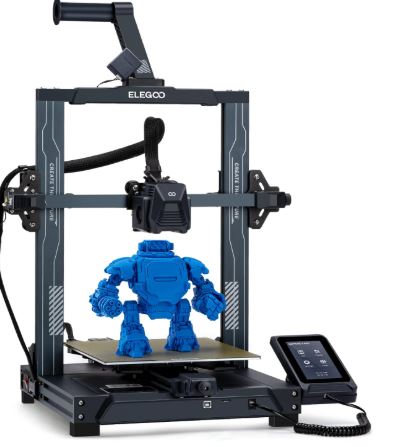
I recently purchased the 3 Pro 3D printer for under £200, and I’m genuinely impressed. Right out of the box, it felt sturdy and well-built, which gave me confidence in its durability. Assembly was straightforward, thanks to the helpful setup video provided on the SD card. Within an hour, I was printing my first demo model, and the results were fantastic.
The print quality is outstanding, even for intricate designs. Using PLA+ filament, I achieved excellent results with smooth finishes and precise details. Adjusting the bed leveling was simple, and the printer handled various filaments flawlessly. I appreciated the responsive customer support when I had slicer software questions—they quickly suggested using Orca, which solved my initial issues.
This printer’s features are highly user-friendly. The web-based interface allows me to monitor prints and control settings easily. I even set up a webcam to keep an eye on progress. Printing directly from Orca slicer via Ethernet was a breeze, saving me the hassle of transferring files manually.
What impressed me most was how affordable printing is. A single roll of filament lasts a long time, and the cost per item is minimal. I’ve printed several functional items like a phone stand and organizational tools—all for a fraction of the retail price. This printer truly unlocks creativity and makes 3D printing accessible.
Overall, the 3 Pro delivers exceptional performance at an entry-level price. It’s reliable, versatile, and packed with features typically found in pricier models. If you’re considering your first 3D printer or want a budget-friendly option with professional-grade results, this is a perfect choice. Highly recommended!
Creality Ender
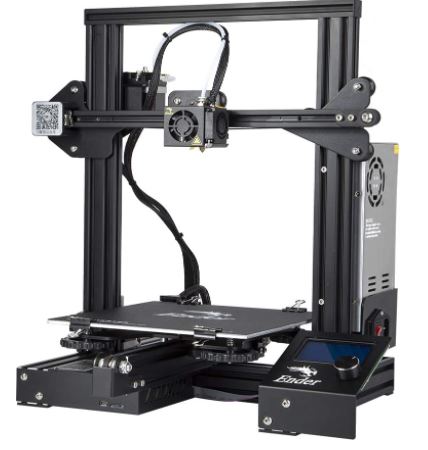
Setting up the Creality Ender 3D printer was a nice experience overall as tested. The assembly was not too difficult, and we were able to get it ready quite easily. It’s a great entry into the world of 3D printing, especially for beginners.
The print quality of the Ender 3D printer is impressive, especially with PLA material. The prints turned out great, and I was delighted with the accuracy and details it provided. It’s a fantastic tool for unleashing creativity and making various objects.
However, there were some shortcomings I encountered during the testing process. One issues I faced only once was the Thermal Runaway E1 errors after months of use with varying circumstances.
The noise level of the printer was a bit high, and it could be heard in different rooms, which might be annoying for some. Another drawback I found was with PET-G filament. While it offers strength, it is not as easy to work with compared to PLA, and it tends to cause more stringing and messiness during prints.
Overall, the Creality Ender 3D printer is a great entry-level option for beginners, offering excellent print quality and a good starting point for 3D printing enthusiasts. However, there are some upgrades and modifications required to enhance user-friendliness and improve the overall experience. Considering the price range, it’s still a worthy investment for those looking to embark on the 3D printing journey.
Entina Mini
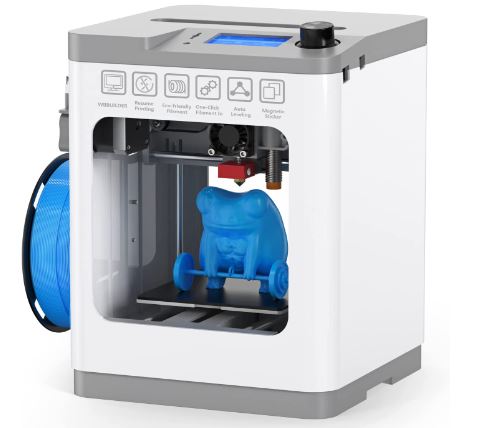
The pleasure of testing the Entina Mini 3D printer, which falls under the affordable price range of £200 was up to the mark. Let me start by praising the plug-and-play capabilities of this remarkable printer. Having previously dealt with filament-based printers that took forever to print larger items, I was delighted to find that the Entina Mini offered a smooth and hassle-free experience. Setting it up felt like a breeze, as it comes in a rigid plastic box that supports all its mechanics and electrics, with the added bonus of self-leveling technology.
With a power brick running the show, it genuinely felt like a plug-and-play device. Loading the filament and inserting the SD card to start printing was a simple and straightforward process. The printer comes with user-friendly software that allows easy access to free 3D models and effortless file creation, making it ideal for beginners like me.
The upgraded version of the Entina Mini boasts a heated bed, which ensures better print quality, and the magnetic bed is a convenient feature, allowing easy removal of finished prints. Moreover, the printer’s one-touch quieter option made it a peaceful addition to my workspace, sitting neatly on a shelf inside a cupboard.
Though the print area is small, it proved more than adequate for most of my projects. Larger printers often take endless hours to complete prints, so the compact size of the Entina Mini is not a significant drawback for me.
While the printer’s open sides give it a neat and consumer-grade appearance, it lacks a fan mod for a more efficient hotend cooling, particularly with certain materials. However, for my current needs, this hasn’t posed a major issue.
WEEFUN
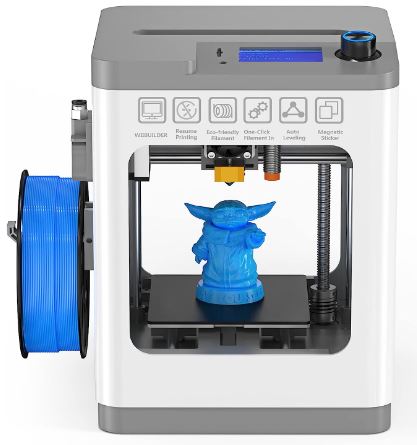
I recently purchased the WEEFUN 3D printer under 200 uk, and I couldn’t be happier with my choice. As someone new to 3D printing, I was looking for something affordable, compact, and beginner-friendly, and this printer delivered on all fronts. Setting it up was incredibly simple – it comes pre-assembled, and I was ready to print within minutes of unboxing. The included instructions were clear, and the auto-leveling feature made the process smooth and hassle-free.
The print quality is excellent for a printer under £200. I was impressed by the sharp details and minimal layer lines on my first few prints. The test models provided on the memory card printed perfectly, and using the slicer software included with the printer was straightforward. I’ve already started experimenting with custom designs, and the results have been very satisfying.
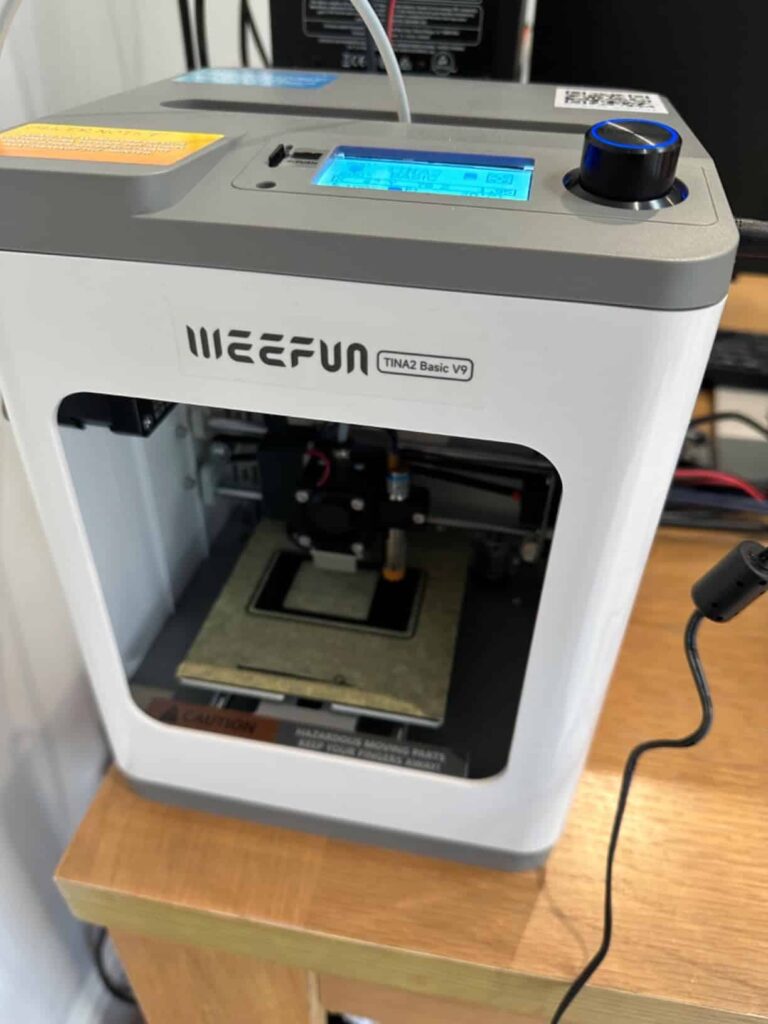
While the build plate is relatively small (10x10x12 cm), it’s perfect for smaller projects or parts that can be assembled later. Its compact size fits neatly on my desk, and the quiet operation means I can run it in shared spaces without any disruption.
For anyone considering a first 3D printer, I wholeheartedly recommend the WEEFUN. It’s affordable, easy to use, and offers impressive print quality for the price. Whether you’re looking to create figurines, practical items, or school projects, this printer is an excellent starting point. It’s a reliable, space-saving machine that’s perfect for beginners and hobbyists. If you’ve been curious about 3D printing but hesitant to try, this is the one to get!
Voxelab Aquila
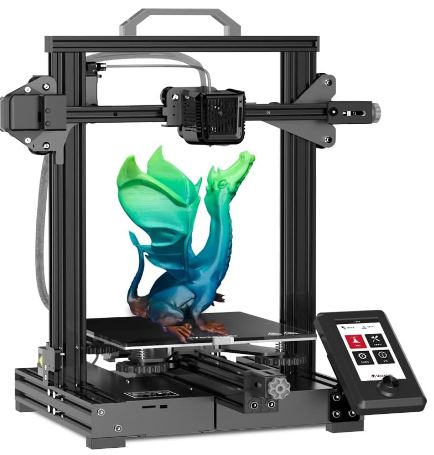
Talking about the tested the Voxelab Aquila 3D printer under £200, let’s begin with the praises.
The printer, once properly set up, performs well and delivers good prints. It took some time to understand the settings and get everything calibrated, but after that initial learning curve, the printing process went quite smoothly. The included glass plate provides good adhesion, although applying glue might be necessary for some prints. The printer’s price was favorable, making it an attractive option for those on a budget. It comes with useful tools and a bit of filament for test prints.
However, the printer can be challenging for beginners. The setup process, including leveling the bed, can be time-consuming and may require external resources like YouTube videos for guidance. There is no alert or alarm system to notify users in case of filament tangles or snaps, which can be frustrating, especially for overnight prints. The printer’s noise level might be bothersome, although it can be mitigated by placing it in a less frequently used room.
In summary, the Voxelab Aquila 3D printer offers decent performance at an affordable price. However, it may not be the most beginner-friendly option. If you’re willing to invest time and effort into learning and troubleshooting, this printer can deliver satisfactory results.
BIQU
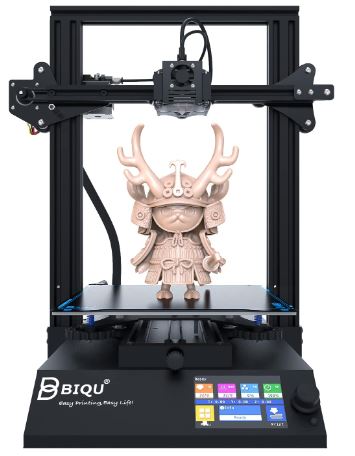
The BIQU 3D printer is an attractive option for those looking for an affordable and feature-rich 3D printer. The assembly process, although slightly more involved than some other printers, is straightforward with comprehensive instructions and helpful videos available. The printer’s extruder has been improved with a single USB-C wire, making filament feeding and swapping easier and more convenient.
The build plate’s powder coating provides good adhesion and allows for easy removal of prints. The touchscreen interface, although not the best, is reasonably intuitive and functional. The print quality is impressive right out of the box, comparable to some of the best printers on the market.
Now, let’s discuss the shortcomings. Some users have reported issues with the printer freezing, error messages, and difficulties in printing consecutive items without manually restarting the printer. The lack of a detailed instruction manual for the touchscreen and certain functions can be frustrating for beginners.
Additionally, the provided SD card has a limited capacity, and users may need to acquire larger cards. Customer support has been a significant issue for some users, with slow responses and unhelpful solutions.
ANYCUBIC
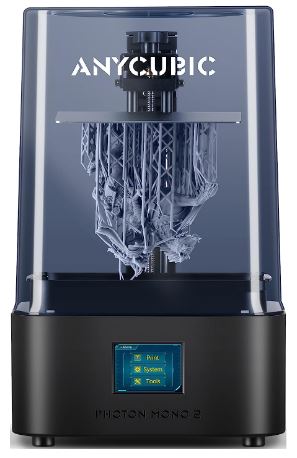
The ANYCUBIC 3D printer has an impressive build volume and produces amazingly detailed prints, making it a great option for those who value high-quality results. The printer’s performance is commendable, providing some great 3D prints with relative ease. For beginners, the printer offers a user-friendly touch screen interface and straightforward setup. Additionally, the Mono version, in particular, stands out for its fast print times and efficient output.
One notable drawback of the ANYCUBIC 3D printer is its print time, especially for highly detailed prints, which can be quite slow. Some users have experienced challenges with failed prints, bed leveling, and resin-related issues. The build quality, with its plastic exterior and resin vat, might be a concern for some users, as it can lead to difficulties in cleaning and maintaining the printer. The use of plastic components can also limit the options for cleaning agents and replacement parts, making certain tasks less convenient.
How We Tested
Testing 3D printers requires a meticulous process to ensure we deliver the most accurate and reliable recommendations. Here’s how we evaluate the best 3D printers in this budget-friendly category:
- Unboxing and Setup
We begin by assessing how easy it is to unbox and set up the printer. This includes evaluating assembly requirements, clarity of instructions, and how quickly a first-time user can get the printer ready to operate. - Ease of Use
For beginners, simplicity is crucial. We test the user interface, menu navigation, and features like auto-leveling, filament loading, and bed adhesion. These aspects are checked to ensure the printer is beginner-friendly. - Print Quality
Using a mix of test files, we evaluate the print quality across different models. This involves checking for sharp details, minimal layer lines, and consistency in print output. We test both the provided sample designs and custom STL files to see how the printer performs across varying levels of complexity. - Software Performance
The slicer software plays a vital role in 3D printing. We assess the ease of installation, compatibility, and how intuitive it is to use. We also test the printer’s connectivity, such as WiFi, USB, or memory card options, to ensure a smooth experience. - Noise Levels and Build Size
We measure the noise output during printing to determine if the printer is suitable for shared or quiet spaces. Additionally, we evaluate the build volume to understand its capability for handling small and medium-sized projects. - Durability and Reliability
We run the printers for extended periods, printing multiple objects to test for mechanical durability and consistency. We monitor for issues like misprints, nozzle clogs, or heating problems. - Value for Money
Finally, we compare the printer’s features, performance, and build quality to its price, ensuring it offers excellent value for beginners and hobbyists.
Our rigorous testing process ensures that only the best 3D printers under £200 make it onto our recommendations, so you can buy with confidence!
What Should I Look For When Buying 3D Printer Under 200 UK
Filament Support
From my personal perspective, one crucial feature that sets apart more expensive 3D printers from affordable ones is filament support. Cheaper 3D printers often only work with a limited number of plastic filaments, typically PLA and/or ABS. PLA is a biodegradable, plant-based polymer, while ABS is the strong plastic used in Legos. ABS prints are sturdy and safe, but they can be tricky to work with, as they tend to curl at the corners and emit an unpleasant smell during printing.
Some budget-friendly 3D printers only support PLA, while others can handle a wider range of materials. However, if you want to experiment with a diverse selection of filaments, such as water-soluble, wood- or metal-infused composites, and both robust and flexible types, you may need to invest in a more advanced model. Understanding the variety of available filaments is essential in making the right choice for your 3D printing projects.
FDM
From a personal perspective, filament support in 3D printing plays a crucial role in determining the quality and aesthetics of the final printed models. Most 3D printers use Fused Deposition Modelling (FDM) technology, which involves melting plastic and building up the model layer by layer. The two primary materials used are polylactide (PLA) and acrylonitrile butadiene styrene (ABS). ABS models are stronger, while PLA models usually result in cleaner prints, but the difference is not significant.
What’s fascinating is that you can also use filaments with added materials like copper or wood. This allows you to create models with unique textures and even make them electrically conductive if needed. Another advantage of filament support is the ability to switch between different materials or colors during printing. For example, you can pause the print, change the filament, and resume to create models with multiple colors or materials.
However, if you want to achieve more complex color mixing, you’ll need a printer with a dual extruder head. This feature allows the printer to switch between two separate filament feeds as it prints each layer. It opens up the possibility of creating intricate multi-colored models.
On the other hand, there’s an alternative technology called Stereolithography (SLA), which uses liquid resin cured by a laser to create models. SLA can produce cleaner and more detailed prints compared to FDM printers at a similar price point. However, it emits unpleasant odors and requires the printed models to be washed with alcohol after the printing process, making it less suitable for household use.
Overall, understanding and utilizing different filament options in 3D printing can greatly enhance the creativity and quality of the printed models. Whether it’s experimenting with different materials or achieving unique color combinations, filament support opens up a world of possibilities for 3D printing enthusiasts.
FAQ: Best 3D Printer Under 200 UK
What is a reasonable price for a 3D printer?
A reasonable price for a 3D printer typically falls between £100 and £400 for entry-level, consumer-grade models. While high-end, commercial printers can cost £1,000 or more, affordable options provide great value for beginners and hobbyists looking for quality printing within a budget.
Is it profitable to buy a 3D printer?
Yes, buying a 3D printer can be profitable. You can generate income by selling 3D printed objects, offering 3D printing services, or selling digital products. However, it’s not a guaranteed easy way to earn money and requires time, effort, and skill to become profitable.
Why is 3D printing so expensive?
3D printing can be expensive due to the use of superior materials. High-quality components are often required to meet the growing demand for better results, which increases the overall cost. These premium materials contribute to improving the finished product’s quality, driving up the price of 3D printing services.
Why 3D printing is not popular?
3D printing isn’t as popular for mass production because traditional manufacturing methods are more cost-effective and efficient for large-scale production. However, 3D printing excels in small-batch production and prototyping, making it a valuable tool for specific needs but not ideal for large manufacturing runs.
What is the cheapest 3D printing method?
The cheapest 3D printing method is FDM (Fused Deposition Modeling), as it uses inexpensive materials and is widely accessible. Unlike more expensive methods like SLS or Carbon DLS, FDM is ideal for prototyping or creating visual models. Always consider your specific needs before choosing a 3D printing method.
Related Resources:

Tom Hargreaves
Tom Hargreaves is a technology expert with a focus on smart home security and user experience. He has extensive knowledge on the latest trends and advancements in the field, and has written extensively on the topic. He is known for his ability to break down complex technology concepts and make them accessible to a wide audience. His writing covers a range of topics, from the latest smart home devices to the latest in home security technology, and he is always on the lookout for new and innovative ways to improve the smart home experience.

Smith Technologist
Smith is an expert in writing exceptional in-depth reviews about technology for Office Ergonomic UK. He has deep knowledge of the security camera's latest trends and technical specifications for gadgets and software.
He thoroughly researches the product features, both positive and negative, and prepares writers to analyze the merits of new technology, giving readers an informed perspective on whether to buy or not.
Writing reviews with accuracy, detail, insights, and precision is key when providing assessments from an expert point of view.

